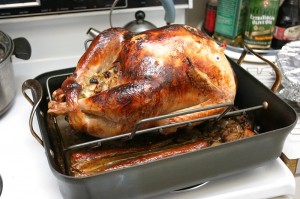
It's Thanksgiving week and that means extra helpings of stories to keep you healthy, despite the fact that you're about to eat the biggest meal of the year.
This post is no exception, but don't click away yet! This one is easy. Midway through a great article from The Wall Street Journal (with everything you want to know about your triglyceride levels after a meal, the so-called "postprandial" period) comes a morsel of easy-to-implement health info.
It's simple: get some exercise hours before the big meal:
Light exercise like a slow walk, done continuously for 30 minutes or more, appears to reduce the peak in triglycerides that occurs after eating a meal some 12 to 16 hours later, according to research led by Peter Grandjean, director for the Center for Healthy Living at Baylor University in Waco, Texas.
It's unclear exactly why there is a delay, but exercise induces a number of cellular responses that require different amounts of time before taking effect, Dr. Grandjean says.The findings were reported in 2008 in the American Journal of Clinical Nutrition. Other research has suggested that the benefits of exercise on fat processing can last as long as 48 hours.
The ideal is to be consistently active. But if people are more sedentary and want to time their exercise, it is best to take that long walk half a day before a big meal, Dr. Grandjean says.
"Those people wishing to start an exercise regimen can see beneficial effects on postprandial lipids with just one session," Dr. Grandjean says.
In other words, on Thanksgiving morning, put the turkey in the oven and go for a short walk.